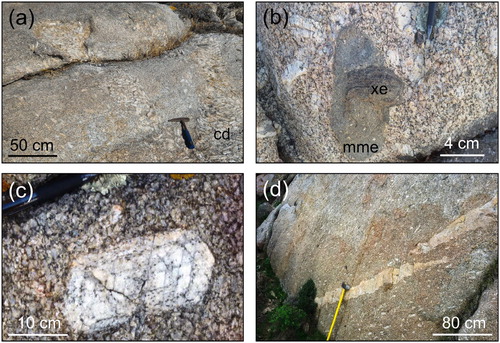Figures & data
Figure 1. (a) Tectonic scheme of the Variscan Sardinia (Asinara is indicated in the black box); (b) Tectonic scheme of the Asinara Island (north Sardinia, Italy).
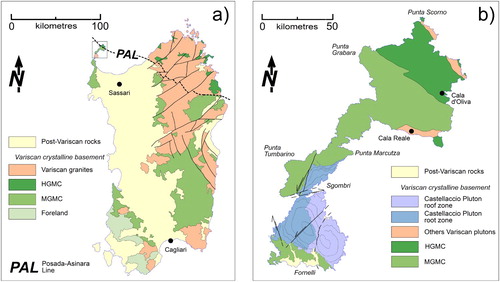
Figure 2. Structural sketch map of the principal Variscan domains in Europe (Sardinia is indicated in the black box).
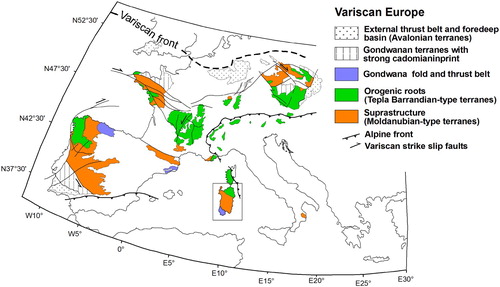
Figure 3. The first three stereonets (a–c) show the contour plot of structural data as multiples of uniform distribution, lower-hemisphere equal area projection. The last diagram (d) shows the orientation of post-Variscan faults as rose diagram. (a) Magmatic lineation (number of data = 84, maximum density = 6.15%), (b) poles to magmatic foliation (number of data = 81, maximum density = 7.64), (c) poles to metamorphic foliation (number of data = 42, maximum density = 7.85) and (d) fault orientation pattern (number = 34, largest bin = 11%).

Figure 4. Major-elements distribution maps. In all maps, the margin of the pluton is indicated by a solid line, the dotted line crossing the pluton indicates the approximate contact between the root zone (to the W) and the apical part of the pluton (to the E): (a) spatial variation of A/CNK ratio, (b) spatial variation of SiO2, (c) spatial variation of Al2O3, (d) map of Na2O, (d) K2O map and (e) spatial variation of CaO.
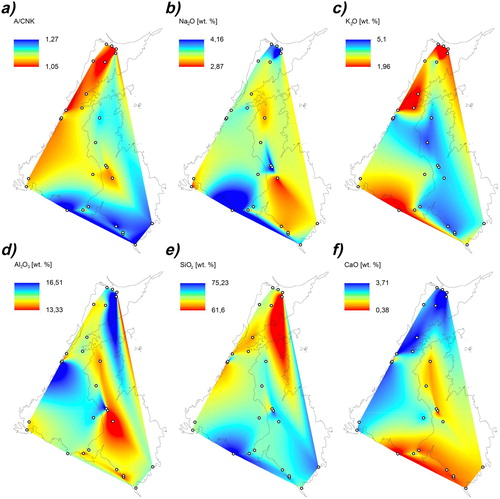
Table 1. Major-elements composition and A/CNK value of selected samples.
Figure 5. Magmatic units of the Castellaccio Pluton: (a) Granodiorite with mafic enclaves (CPa); (b) porphyritic granodiorite (CPb); (c) Late-magmatic acid dyke (CPe) intruding granodioritic-monzogranitic rocks (CPc); (d) detail of fine-grained leuco-monzogranite (CPd); (e) contact between a coarse-grained granodiorite (CPb) and leuco-granodiorite (CPc), the contact is injected by a thin acidic dyke (CPe).
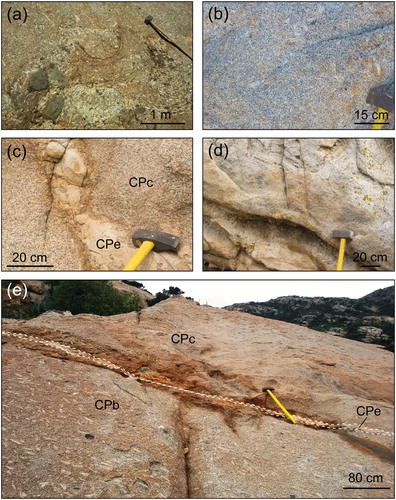
Figure 6. Magmatic structures: (a) detail of cumulitic domains (cd) within the Tumbarino Unit (CPa); (b) close-up of magmatic mafic enclave (mme) cut by a metamorphic xenolith (xe), Tumbarino Unit (CPa); (c) detail of a large idiomorphic K-feldspar with several overgrowths, Castellaccio Unit (CPb); (d) late-magmatic acid dyke (CPe) parallel to the main magmatic foliation defined by K-feldspar phenocrysts in Castellaccio Unit (CPb).
